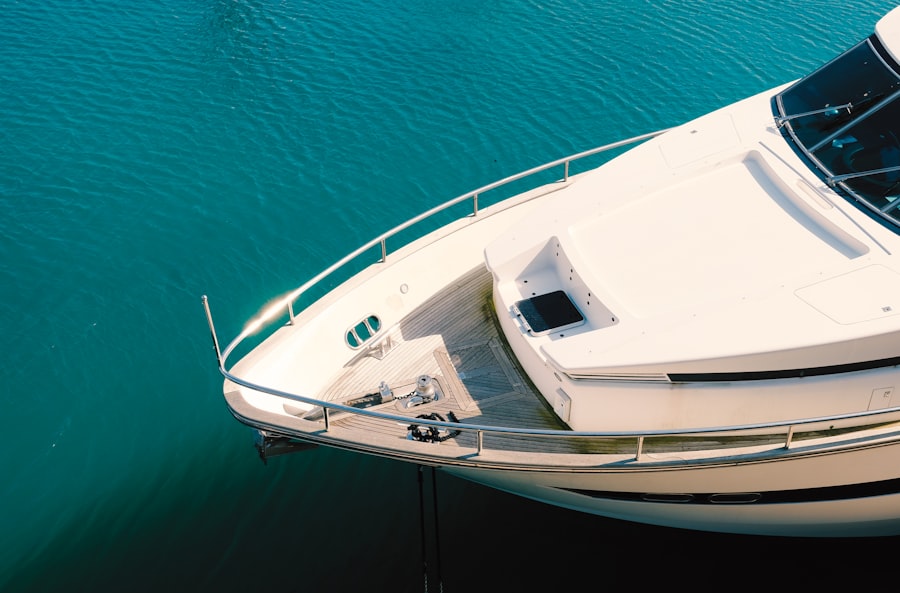When embarking on the journey of purchasing a boat, the first step is to thoroughly understand your needs and budget. This process begins with self-reflection on how you intend to use the boat. Are you looking for a vessel for leisurely weekend outings, or do you have aspirations of fishing in deep waters?
Perhaps you envision hosting gatherings with friends and family on the water. Each of these scenarios will dictate different requirements in terms of size, type, and features of the boat. For instance, a small fishing boat may suffice for casual angling trips, while a larger yacht might be necessary for entertaining guests or embarking on extended voyages.
Budgeting is equally crucial in this initial phase. It’s essential to establish a realistic financial plan that encompasses not only the purchase price but also ongoing costs such as maintenance, fuel, insurance, and storage. A common mistake among first-time boat buyers is underestimating these additional expenses.
For example, while a boat may have an attractive sticker price, the costs associated with upkeep can add up quickly. Therefore, it’s wise to create a comprehensive budget that includes both the initial investment and the long-term financial commitment required to keep your boat in good condition.
Key Takeaways
- Assess your boating needs and budget before making a purchase.
- Choose the right type of boat based on your intended activities.
- Weigh the pros and cons of buying new versus used boats.
- Plan for financing, insurance, and ongoing maintenance costs.
- Prioritize safety, follow regulations, and engage with boating communities.
Types of Boats and Their Uses
The boating world is diverse, with various types of vessels designed for specific activities and environments. Understanding these categories is vital for making an informed decision. For instance, if you are drawn to fishing, you might consider a center console boat, which offers ample space for gear and easy access to the water.
Alternatively, if your interests lie in sailing, a sailboat with a sturdy hull and reliable rigging would be more appropriate. Each type of boat serves distinct purposes; therefore, identifying your primary activities will help narrow down your options. In addition to recreational uses, boats can also be categorized by their construction materials and design features.
For example, fiberglass boats are popular due to their durability and low maintenance requirements, while wooden boats are often favored for their aesthetic appeal and traditional craftsmanship. Furthermore, inflatable boats offer portability and ease of storage, making them ideal for those with limited space or who frequently travel. By understanding the various types of boats available and their intended uses, you can make a more informed choice that aligns with your lifestyle and preferences.
The decision to buy new or used is a significant one that can impact your boating experience and financial situation. New boats come with the latest technology, warranties, and the peace of mind that comes from knowing you are the first owner. They often feature modern designs and improved fuel efficiency, which can enhance your overall experience on the water.
However, new boats also come with a higher price tag and can depreciate quickly in value once they leave the dealership. On the other hand, purchasing a used boat can be an excellent way to save money while still acquiring a quality vessel. The used boat market is vast, offering a wide range of options at various price points.
However, buying used requires careful consideration and due diligence. It’s essential to inspect the boat thoroughly for any signs of wear or damage and to obtain a comprehensive history report if possible. Additionally, understanding the previous owner’s maintenance practices can provide insight into the boat’s condition.
While used boats may not have all the latest features, they can still offer great value and serve your needs effectively if chosen wisely.
Financing and Insurance

Financing a boat purchase can be complex, as it often involves navigating various loan options and interest rates. Many buyers opt for marine loans specifically designed for purchasing boats, which typically offer competitive rates compared to traditional personal loans. When seeking financing, it’s crucial to shop around and compare offers from different lenders to find the best terms that suit your financial situation.
Factors such as credit score, loan duration, and down payment will influence your financing options significantly. Insurance is another critical aspect of boat ownership that should not be overlooked. Just like automobiles, boats require insurance coverage to protect against potential damages or liabilities.
Boat insurance policies can vary widely in terms of coverage options, including liability protection, collision coverage, and comprehensive coverage for theft or damage from natural disasters. It’s advisable to consult with an insurance agent who specializes in marine insurance to ensure you have adequate coverage tailored to your specific needs. Understanding both financing and insurance will help you navigate the financial landscape of boat ownership more effectively.
Maintenance and Storage
| Metric | Description | Unit | Typical Value | Notes |
|---|---|---|---|---|
| Storage Temperature | Recommended temperature range for storage | °C | 15 – 25 | Maintains product integrity and prevents degradation |
| Humidity Level | Optimal relative humidity for storage environment | % RH | 40 – 60 | Prevents mold growth and corrosion |
| Maintenance Frequency | Interval between routine maintenance checks | Months | 3 – 6 | Depends on equipment type and usage |
| Downtime Due to Maintenance | Average downtime caused by maintenance activities | Hours/Month | 4 – 8 | Impacts operational efficiency |
| Storage Capacity | Maximum volume or quantity that can be stored | Units or Cubic Meters | 1000 Units / 50 m³ | Varies by facility size |
| Inventory Turnover Rate | Frequency at which inventory is replaced | Times/Year | 6 – 12 | Higher rates indicate efficient storage management |
| Equipment Lifespan | Expected operational life before replacement | Years | 5 – 15 | Depends on maintenance quality and usage |
Owning a boat comes with the responsibility of regular maintenance to ensure its longevity and performance. Routine tasks such as cleaning the hull, checking the engine oil levels, and inspecting safety equipment are essential for keeping your vessel in top shape. Additionally, seasonal maintenance is crucial; for instance, winterizing your boat before colder months can prevent damage from freezing temperatures.
Many boat owners choose to hire professionals for more complex maintenance tasks like engine repairs or electrical work, but having a basic understanding of maintenance procedures can save time and money. Storage is another important consideration for boat owners. Depending on your location and climate, you may need to choose between dry storage or wet slips at a marina.
Dry storage is often more affordable and protects your boat from harsh weather conditions but requires more effort when launching and retrieving your vessel. Conversely, wet slips provide easy access to the water but may come with higher costs and increased exposure to environmental elements. Regardless of your choice, ensuring proper storage will help maintain your boat’s condition and prolong its lifespan.
Safety and Regulations
Safety should always be a top priority when it comes to boating. Familiarizing yourself with safety regulations is essential not only for your protection but also for that of your passengers and other boaters on the water. Each state has its own set of boating laws that govern aspects such as required safety equipment, speed limits in certain areas, and rules regarding alcohol consumption while operating a vessel.
Understanding these regulations will help you avoid fines and ensure a safe boating experience. In addition to legal requirements, it’s wise to invest in safety training courses that cover essential skills such as navigation, emergency procedures, and first aid. Many organizations offer boating safety courses that culminate in certification; this knowledge can be invaluable in emergency situations.
Furthermore, equipping your boat with necessary safety gear—such as life jackets, fire extinguishers, flares, and a first aid kit—can make all the difference in ensuring everyone on board remains safe during outings.
Joining a Boating Community

Becoming part of a boating community can significantly enhance your experience as a boat owner. These communities often provide valuable resources such as local knowledge about waterways, tips on maintenance and repairs, and opportunities for socializing with fellow boating enthusiasts. Many regions have clubs or associations dedicated to specific types of boating activities—such as sailing clubs or fishing associations—where members can share experiences and participate in organized events.
Engaging with a boating community also opens doors to networking opportunities that can lead to friendships or partnerships for shared outings or adventures. Many communities host events such as regattas or fishing tournaments that allow members to showcase their skills while enjoying camaraderie on the water. Additionally, online forums and social media groups dedicated to boating can serve as platforms for exchanging advice or finding answers to common questions about boat ownership.
Enjoying Your New Boat
Once you’ve navigated the complexities of purchasing a boat—from understanding your needs to securing financing—it’s time to relish the joys of ownership. The thrill of being out on the water is unparalleled; whether you’re cruising along scenic coastlines or anchoring at secluded coves for swimming and picnicking, each outing presents an opportunity for adventure and relaxation alike. The freedom that comes with owning a boat allows you to explore new destinations at your own pace while creating lasting memories with family and friends.
Moreover, embracing the boating lifestyle means immersing yourself in various activities that enhance your enjoyment of the water. From fishing trips at dawn to sunset cruises with loved ones, each experience contributes to a deeper appreciation for nature and the outdoors. As you become more comfortable operating your vessel, you may even find yourself seeking out new challenges—such as learning advanced sailing techniques or participating in competitive racing events.
Ultimately, owning a boat opens up a world of possibilities that enriches your life beyond measure.


